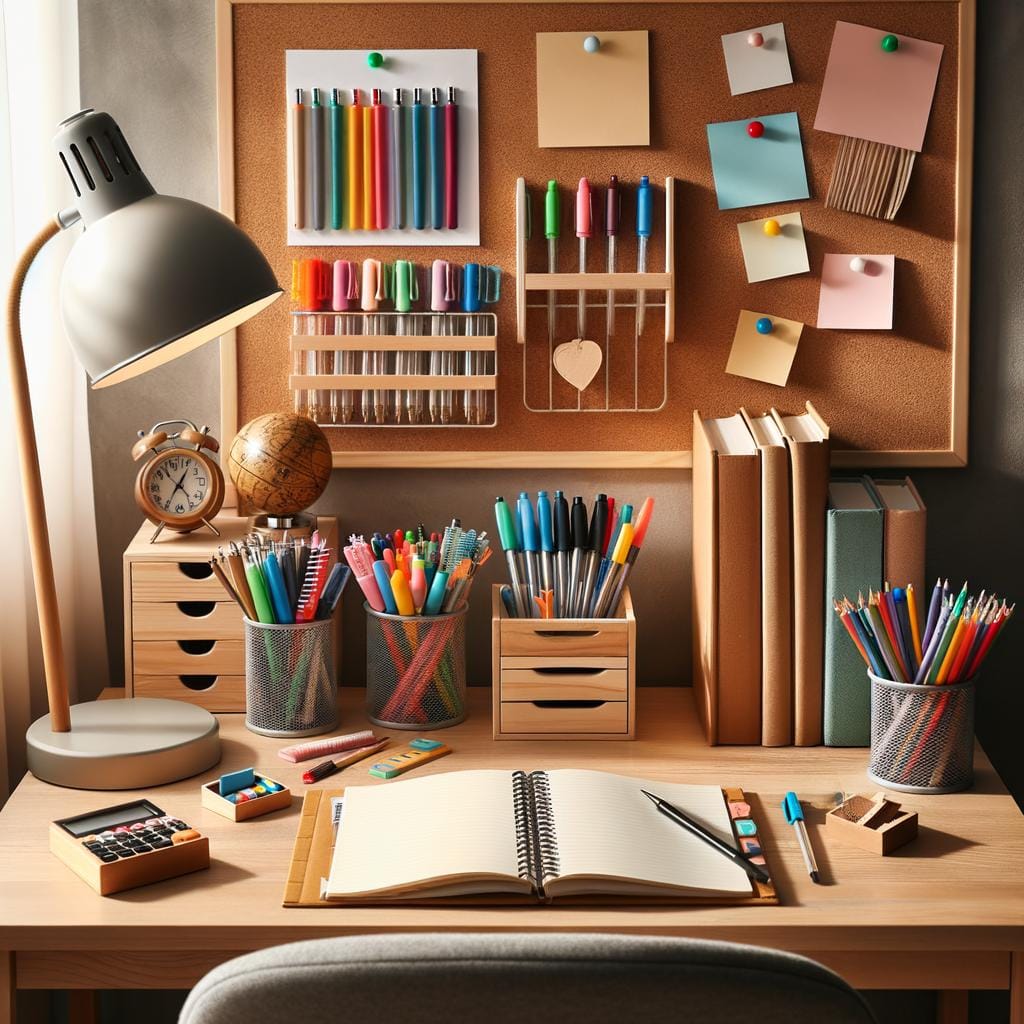Effective educational tool arrangement is a critical aspect of creating an optimal learning environment for students of all ages. The strategic placement and organization of educational tools can significantly impact the overall effectiveness of teaching and learning processes. From physical manipulatives to digital resources, the arrangement of these tools plays a crucial role in engaging students, promoting active participation, and enhancing retention of information.
In educational settings, there are various types of tools that educators utilize to facilitate learning, including physical tools like textbooks, art supplies, and science equipment, as well as digital tools such as interactive whiteboards, tablets, and educational software. Hybrid tools that combine both physical and digital components are also becoming increasingly popular. Understanding the different types of educational tools available is essential for educators looking to create engaging and effective learning environments for their students.
When arranging educational tools, several key factors must be taken into consideration to ensure that they are age-appropriate, accessible to all students, and effective in meeting specific learning objectives. The arrangement should not only be visually appealing but also functional in supporting diverse learning styles and abilities. By carefully considering these factors, educators can maximize the potential impact of educational tools in promoting student success and academic achievement.
Types of Educational Tools
Educational tools play a crucial role in enhancing the learning experience for students in educational settings. When it comes to educational tool arrangement, it is important to differentiate between physical tools, digital tools, and hybrid tools to create a well-rounded and effective learning environment. Each type of tool offers unique benefits and considerations that educators must take into account when organizing them for optimal use.
Here are some key differences between physical tools, digital tools, and hybrid tools used in educational settings:
- Physical Tools: These are tangible objects that students can interact with directly. Examples include textbooks, manipulatives, science kits, art supplies, and physical models.
- Digital Tools: These are software-based resources that provide interactive learning experiences through computers, tablets, or other electronic devices. Examples include educational apps, interactive simulations, online tutorials, and multimedia presentations.
- Hybrid Tools: These combine both physical and digital elements to create dynamic learning experiences. Examples include augmented reality tools, virtual reality headsets, smart boards with touchscreen capabilities, and interactive projectors.
When arranging educational tools in the classroom or online learning environment, educators must consider the unique advantages and limitations of each type of tool to create a balanced approach that addresses different learning styles and objectives. By strategically incorporating a mix of physical, digital, and hybrid tools, educators can cater to diverse student needs while promoting engagement and active participation in the learning process.
This thoughtful educational tool arrangement can ultimately enhance student understanding and retention of key concepts across various subject areas.
Factors to Consider
When it comes to arranging educational tools in learning environments, there are several key factors that educators need to consider to ensure optimal effectiveness and engagement. One crucial aspect is the age-appropriateness of the tools being used, taking into account the developmental stage and abilities of the students. By aligning educational tools with the age group of learners, educators can ensure that the materials are engaging, comprehensible, and suitable for their cognitive levels.
Accessibility is another important consideration when organizing educational tools in a classroom setting. It is essential to ensure that all students have equal access to the resources available, regardless of any physical or learning challenges they may face. This includes providing tools in multiple formats to accommodate different learning styles and abilities, as well as implementing inclusive design principles to make materials accessible to all.
Effectiveness of educational tools is a critical factor that should not be overlooked when arranging resources for teaching and learning. Educators need to assess whether the tools chosen actually support the learning objectives and outcomes they intend to achieve.
This involves evaluating how engaging, interactive, and relevant the tools are in facilitating student understanding and retention of knowledge. By selecting tools based on their proven effectiveness in enhancing learning experiences, educators can create a more impactful educational tool arrangement that maximizes student success.
- Consider age-appropriateness when selecting educational tools
- Ensure accessibility for all students, including those with diverse needs
- Evaluate the effectiveness of tools in supporting learning objectives
Organizational Strategies
One key aspect to consider when organizing educational tools is the accessibility factor. Educators need to ensure that tools are easily accessible to both themselves and students when needed. This may involve implementing storage solutions such as designated cabinets, shelves, or bins that are strategically placed within the classroom or learning space. By having a designated spot for each tool and clearly labeling its location, educators can save time searching for resources and create a more efficient teaching environment.
Additionally, establishing a rotation schedule for educational tools can be beneficial in keeping students engaged and interested in learning activities. By periodically introducing new tools or rotating existing ones, educators can prevent monotony in the classroom and provide fresh opportunities for students to explore different learning materials.
This approach not only adds variety to lessons but also ensures that educational tools are being utilized effectively throughout the school year. In conclusion, by implementing thoughtful organizational strategies in educational tool arrangement, educators can optimize their teaching practices and create dynamic learning environments that foster student growth and development.
Classroom Layout
Impact on Accessibility
The layout of a classroom can directly affect how easily students can access educational tools during lessons. For example, placing designated stations or areas for different types of tools can make it easier for students to locate and utilize them when needed. Additionally, ensuring that there is enough space between workstations can prevent overcrowding and promote smooth circulation within the classroom. By considering accessibility when arranging educational tools, educators can streamline the learning process and enhance student participation.
Enhancing Student Engagement
Effective classroom layout can also contribute to enhancing student engagement with educational tools. Creating designated areas for group work, hands-on activities, or technology integration can encourage collaborative learning experiences and foster a supportive learning environment.
By incorporating flexibility into the physical arrangement of the classroom, educators can adapt the space to accommodate different teaching styles and activities, ultimately promoting active participation and boosting student motivation. A dynamic classroom layout that caters to diverse learning needs can help optimize the use of educational tools and maximize student engagement in lessons.
Integrating Classroom Technology
In today’s digital age, integrating technology into the physical layout of a classroom is essential for optimizing educational tool arrangements. Interactive whiteboards, digital devices, online platforms, and other technological resources should be strategically incorporated into the room design to support modern teaching methods and enhance student learning experiences.
By integrating technology seamlessly into the classroom layout, educators can create a tech-savvy environment that encourages interactive participation, fosters creativity, and prepares students for success in a digital world. The thoughtful integration of technology with physical arrangements of educational tools can truly revolutionize traditional teaching practices and elevate student engagement levels in innovative ways.
Technology Integration
In today’s digital age, technology plays a crucial role in educational tool arrangements, enhancing the learning experience for both students and teachers. Software platforms, interactive whiteboards, and digital resources have revolutionized the way educational tools are used in classrooms. These technological advancements provide dynamic and interactive learning opportunities that cater to diverse learning styles and promote student engagement.
One key aspect of technology integration in educational tool arrangements is the use of software platforms. These platforms offer a wide range of tools such as virtual labs, multimedia presentations, and collaborative project management applications. Teachers can leverage these platforms to create interactive lessons, assess student performance, and track progress effectively. By incorporating software platforms into educational tool arrangements, educators can tailor instruction to meet the individual needs of students and enhance overall learning outcomes.
Another critical element in modern educational tool arrangements is the utilization of interactive whiteboards. Interactive whiteboards enable educators to deliver visually stimulating lessons, encourage active participation, and facilitate real-time collaboration among students. With touch-screen capabilities and multimedia functionality, interactive whiteboards provide a dynamic teaching tool that enhances content delivery and fosters student-centered learning experiences. Integrating interactive whiteboards into educational tool arrangements transforms traditional classrooms into innovative spaces that promote creativity, critical thinking, and problem-solving skills.
| Technology Integration | Educational Benefits |
|---|---|
| Software Platforms | Offer virtual labs, multimedia presentations, tailored instruction |
| Interactive Whiteboards | Enable visually stimulating lessons, real-time collaboration among students |
Personalized Learning
Understanding Student Diversity
One of the key aspects of personalized learning is recognizing and appreciating the diverse needs of students. When arranging educational tools in a personalized learning setting, educators must take into account factors such as varying skill levels, interests, and preferred modes of learning. By providing a range of tools that cater to different learning styles, students are empowered to explore concepts in ways that resonate with them individually.
Flexible Learning Spaces
In a personalized learning environment, the physical layout of the classroom plays a crucial role in accommodating different types of educational tools. Flexible learning spaces that allow for easy rearrangement and adaptation are essential for integrating various tools seamlessly. Educators can create zones within the classroom dedicated to specific types of tools or activities, promoting self-directed exploration and collaboration among students. By designing a dynamic environment that supports personalized learning approaches, educators can optimize student engagement and achievement.
Assessment and Feedback
Personalized learning also involves ongoing assessment and feedback to monitor student progress and adjust tool arrangements accordingly. Educators can collect data on how students interact with different tools, their preferences, and areas where they may need additional support.
This information can inform decisions on optimizing the arrangement of educational tools to better meet individual student needs over time. By leveraging assessment data to guide tool selection and organization, educators can ensure that personalized learning approaches remain effective in enhancing student learning outcomes.
Case Studies
In conclusion, educational tool arrangement plays a crucial role in optimizing learning environments and enhancing student engagement. By carefully considering factors such as age-appropriateness, accessibility, and effectiveness, educators can create a space that is conducive to learning and fosters academic growth. Organizational strategies, including storage solutions, labeling systems, and rotation schedules, can help ensure that educational tools are easily accessible and efficiently utilized in the classroom.
Moreover, the physical layout of a classroom can significantly impact the arrangement of educational tools. By strategically placing tools within reach of students and creating designated areas for specific activities, educators can create a dynamic and interactive learning environment. Technology integration also plays a key role in modern educational tool arrangements, with software platforms, interactive whiteboards, and digital resources offering innovative ways to engage students and personalize their learning experience.
Furthermore, personalized learning approaches can influence the customization and arrangement of educational tools to meet individual student needs. By tailoring educational tool arrangements to accommodate different learning styles and preferences, educators can create a more inclusive and effective teaching environment. Overall, by following best practices and innovative solutions showcased in case studies of successful educational tool arrangements in different educational settings, educators can create dynamic learning environments that support student growth and achievement.
Frequently Asked Questions
What Do You Mean by Educational Tools?
Educational tools refer to resources, materials, or software designed to enhance and support the educational experience. These tools can range from physical objects like whiteboards and textbooks to digital platforms and apps.
What Is an Educational Technology Tool?
An educational technology tool is a specific type of educational tool that utilizes technology to facilitate learning. These tools can include devices like computers, tablets, interactive whiteboards, educational software, and online resources. They are designed to enhance teaching and provide students with interactive learning experiences.
What Are the Learning Tools?
Learning tools encompass a wide range of resources used to support and improve the learning process. This can include traditional items such as textbooks, worksheets, and flashcards, as well as digital tools like educational websites, simulations, videos, and online quizzes. Learning tools help educators engage students in different ways and cater to diverse learning styles.

Hello, I’m April Denton, your go-to expert for all things home decluttering and organization. With over a decade of experience helping individuals transform their living spaces into serene, clutter-free sanctuaries, I am passionate about the life-changing benefits of decluttering. My journey into the world of organization began out of necessity, juggling a busy career and a bustling household. I quickly realized that a well-organized home was the key to a more balanced, stress-free life.





